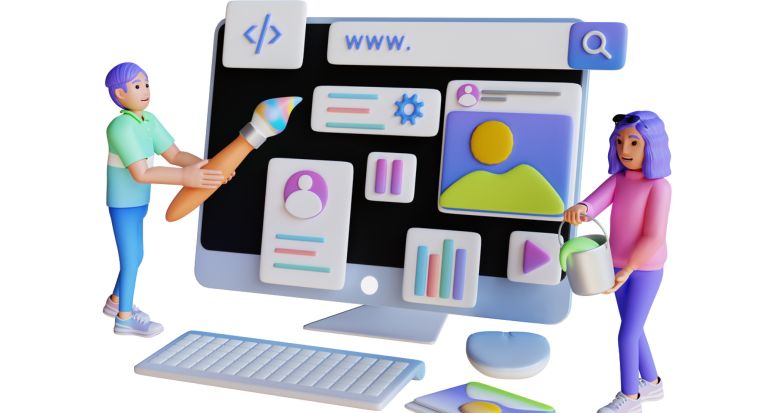When we talk about SEO (Search Engine Optimization), we usually think about keywords, backlinks, and meta descriptions. But have you ever considered the role of easy-to-read visual formats in SEO? Well, you’re about to discover the magic of easy-to-read visuals in boosting your site’s SEO performance.
What is SEO? Importance of Readability in SEO
SEO stands for Search Engine Optimization, a practice that aims to improve the visibility and ranking of a website on search engine results pages (SERPs). The better the SEO, the higher the chances of attracting organic traffic.
In recent SEO Newsies, search engines like Google prioritize user experience. This means they favor content that is not only informative but also easy to read and navigate. Readability directly impacts user engagement, which is a critical factor in SEO.”
Understanding Easy-to-Read Visual Format in SEO
Easy-to-read visual formats refer to the layout and design elements used in presenting content. These include images, videos, infographics, typography, and color schemes.

Types of Visual Formats
- Images: Photos, illustrations, and diagrams.
- Videos: Tutorials, explainers, and interviews.
- Infographics: Data visualizations and flowcharts.
- Interactive Elements: Quizzes, polls, and clickable graphics.
Why Easy-to-Read Visuals Matter
User Engagement
Engaging visuals grab the reader’s attention and encourage them to stay longer on the page. This lowers the bounce rate and increases the time spent on your site.
Bounce Rates
Bounce rate refers to the percentage of visitors who leave your site after viewing only one page. Easy-to-read visuals can reduce bounce rates by making content more engaging and navigable.
Conversion Rates
Clear and compelling visuals can guide users toward desired actions, such as signing up for a newsletter or making a purchase, thus improving conversion rates.
Elements of an Easy-to-Read Visual Format
Clear Typography
Typography is a crucial aspect of readability. Choosing the right font, size, and spacing can make a significant difference.
Effective Use of Colors
Colors should complement the content and enhance readability. Proper contrast between text and background is essential for accessibility.
Proper Spacing
Adequate spacing between lines, paragraphs, and visual elements ensures that the content is not cluttered and is easy to follow.
Typography in SEO Visuals
- Choosing the Right Font: Select fonts that are clean and easy to read. Avoid overly decorative fonts that can distract the reader.
- Font Size and Readability: Ensure the font size is large enough for comfortable reading on all devices. A minimum of 16px is generally recommended.
- Line Length and Spacing: The optimal line length is around 50-75 characters. Maintain consistent line spacing (1.5x to 2x the font size) to enhance readability.
Color Psychology in Visual Content

Importance of Color Choices
Colors evoke emotions and can influence user behavior. Understanding color psychology can help in choosing the right palette for your site.
Color Contrast and Accessibility
High contrast between text and background improves readability for all users, including those with visual impairments.
Role Images and Graphics in SEO
Role of Images in SEO
Images break up text and make content more visually appealing. They also contribute to SEO when optimized properly.
Optimizing Image Size and Format
Use compressed image formats to reduce load times without compromising quality. Common formats include JPEG, PNG, and WebP.
Alt Text for Images
Alt text provides a description of images for search engines and visually impaired users. It helps in improving SEO and accessibility.
Role of Infographics in SEO
- Benefits of Infographics: Infographics simplify complex information and are highly shareable. They can drive traffic and backlinks to your site.
- Creating SEO-friendly Infographics: Include relevant keywords in the infographic title and description. Ensure the file size is optimized for quick loading.
Role of Videos in SEO
Importance of Video Content
Videos are engaging and can significantly boost time spent on your site. They also rank well in search engine results.
Optimizing Videos for SEO
Use descriptive titles, tags, and captions. Host videos on platforms like YouTube and embed them on your site to improve SEO.
Interactive Elements
Adding Interactivity
Interactive content like quizzes and polls can engage users and provide valuable insights into user preferences.
Benefits of Interactive Content
Interactive elements increase user engagement and dwell time, which are positive signals for search engines.
Mobile-Friendly Visuals
Importance of Mobile Optimization
With the rise of mobile browsing, ensuring your visuals are mobile-friendly is crucial for SEO.
Creating Mobile-Friendly Visuals
Use responsive design principles to ensure visuals adapt to different screen sizes. Test your site on various devices to ensure compatibility.
Tools for Creating Easy-to-Read Visuals
Graphic Design Tools
Tools like Canva and Adobe Illustrator can help create professional-looking visuals.
Infographic Creation Tools
Platforms like Piktochart and Visme make it easy to create informative and attractive infographics.
Video Editing Tools
Software like Adobe Premiere Pro and Final Cut Pro can help in creating high-quality videos for your content. When looking for the best video editing option, consider factors like ease of use, features, and compatibility with your needs.
Common Mistakes to Avoid
- Overloading with Information: Avoid cluttering visuals with too much information. Keep it simple and focused.
- Ignoring Accessibility: Ensure all visual content is accessible to users with disabilities by following best practices in design and coding.
Conclusion
Easy-to-read visual formats play a vital role in enhancing user experience and improving SEO performance. By focusing on clear typography, effective use of colors, and mobile optimization, you can create engaging content that not only attracts but also retains visitors.
See Also: Top 10 Search Engine Optimisation Companies: An Ultimate Guide for Your Business





